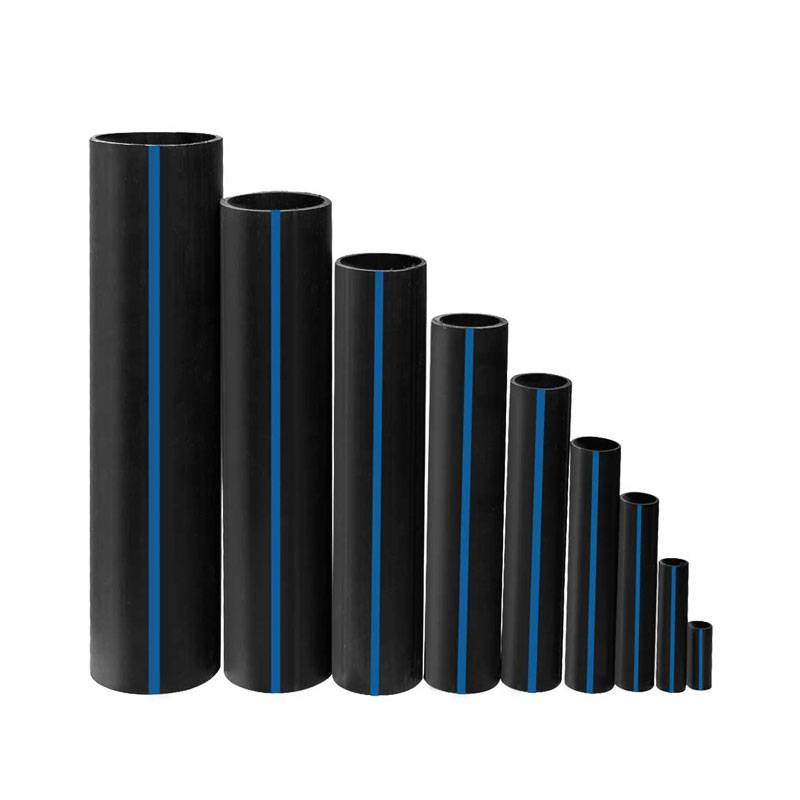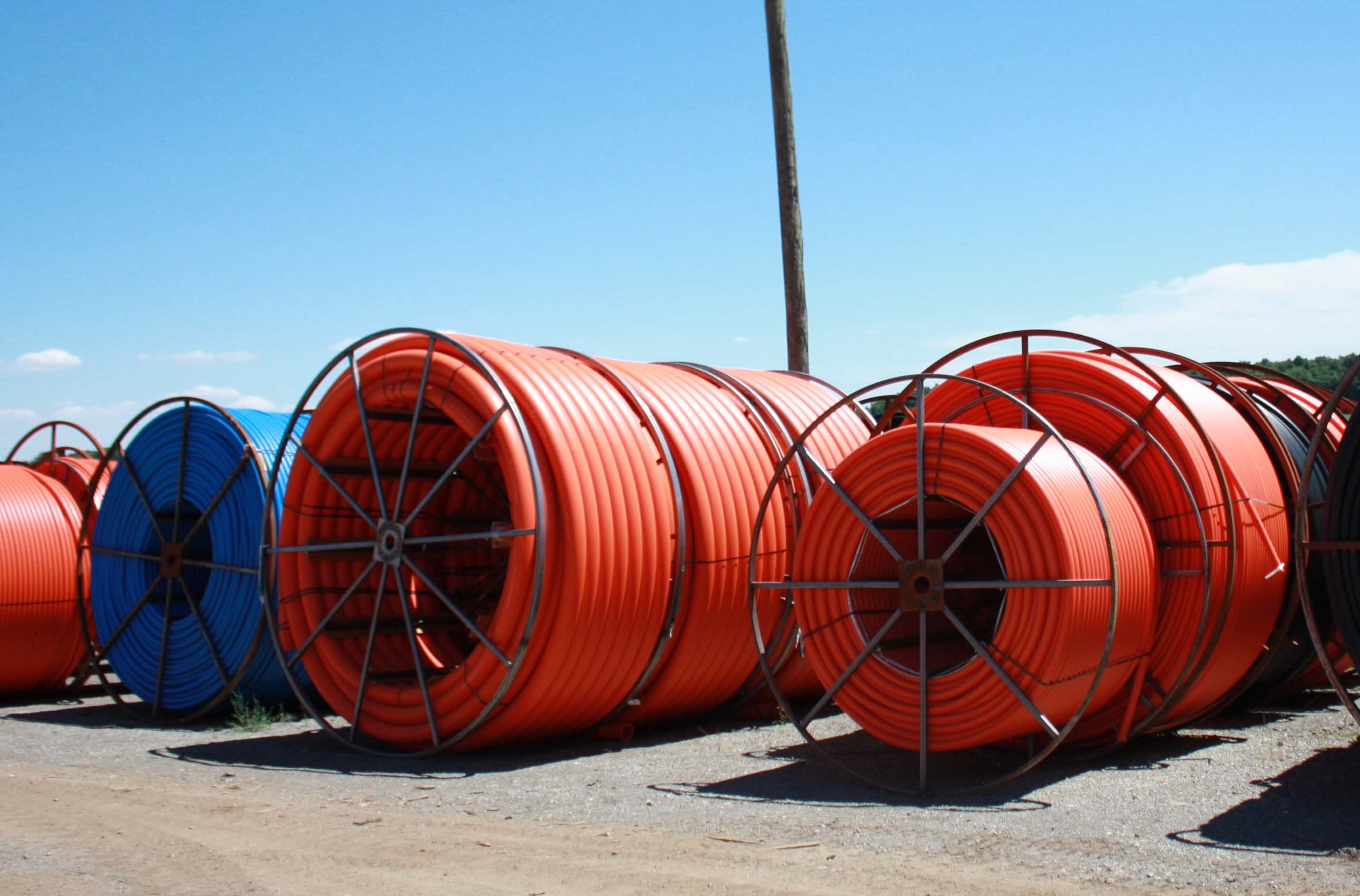Pipe Manufacturing Midland TX: From Raw Material to Finished Pipe
Check Out the Production Process Behind High-Quality HDPE Pipeline and Its Applications
The manufacturing process of high-quality HDPE pipelines is detailed and systematic. It begins with the option of raw materials that enhance efficiency. Following this, ethylene undertakes polymerization to form resin, which is after that formed with extrusion. Quality assurance is vital, guaranteeing that the final item fulfills rigorous requirements. The journey of HDPE pipelines doesn't end with production. Their applications throughout numerous industries reveal a more comprehensive relevance worth taking a look at.
Understanding HDPE: Residences and Advantages

High-density polyethylene (HDPE) is a functional thermoplastic understood for its resilience and resistance to different ecological elements. This product shows exceptional tensile stamina, making it appropriate for requiring applications. Its low-density structure adds to a light-weight product, assisting in ease of dealing with and installation. HDPE also showcases exceptional resistance to chemicals, which minimizes degradation when revealed to rough substances.
The product's reduced dampness absorption even more enhances its long life, making it optimal for use in pipes and tank. Furthermore, HDPE is resistant to ultraviolet (UV) radiation, making certain that items keep their honesty even when exposed to sunlight. Moreover, its versatility enables the production of intricate shapes without compromising toughness. The environmentally friendly nature of HDPE, frequently acquired from recycled materials, contributes to its allure, promoting sustainable methods in manufacturing. On the whole, these residential properties and advantages make HDPE a preferred selection for various industrial and customer applications.
Resources Choice for HDPE Manufacturing
The option of raw materials for HDPE manufacturing is necessary to confirm the end product meets the desired specs and high quality requirements. High-density polyethylene (HDPE) is largely produced from polymerized ethylene, stemmed from fossil fuels such as all-natural gas or unrefined oil. The high quality of these feedstocks greatly influences the mechanical and thermal residential or commercial properties of the final HDPE.
Additives also play a significant role in boosting HDPE's efficiency, consisting of antioxidants, UV stabilizers, and colorants, which improve longevity and resistance to environmental aspects. The selection procedure need to consider not only the chemical make-up of the raw products however also their handling features to guarantee effective manufacturing.
The sourcing of raw materials must prioritize sustainability and compliance with ecological laws, as accountable practices are necessary in today's market. Ultimately, mindful raw product selection lays the foundation for producing top notch HDPE pipelines appropriate for varied applications.
The Extrusion Refine: Shaping HDPE Pipeline
The extrusion procedure plays an important duty in forming HDPE pipes, beginning with thorough material preparation techniques that ensure optimal circulation and uniformity. Similarly vital is the layout of the die, which straight influences the final measurements and surface area quality of the pipe. Together, these variables add substantially to the efficiency and top quality of HDPE pipe manufacturing.
Material Preparation Strategies
Effective production of HDPE pipes starts with precise material preparation methods, especially the extrusion process. During this phase, high-density polyethylene material is initial dried to get rid of wetness, making certain optimal flow characteristics. The material is after that fed into the extruder, where it undertakes home heating and melting, transforming into a viscous state. This home heating procedure is meticulously managed to maintain the product's integrity and efficiency. The molten HDPE is required with a die, shaping it right into a continuous pipeline form. Appropriate temperature management throughout extrusion is essential, as it directly affects the material's residential or commercial properties and the end product top quality. As soon as formed, the HDPE pipeline is cooled and cut to defined lengths, prepared for succeeding processing and applications.
Die Style Importance
Accuracy in die layout plays an important function in the extrusion procedure of HDPE pipes. The die works as the last shaping tool, straight affecting the pipeline's measurements, wall surface density, and surface coating. A well-designed die guarantees uniform material flow, minimizing flaws such as irregularities and weak areas. The geometry of the die have to be optimized to fit the details properties of HDPE, including its viscosity and thermal habits during extrusion. Furthermore, the cooling price of the product as it passes via the die can markedly affect the pipeline's structural honesty. Spending in sophisticated die innovation is important for suppliers aiming to generate high-quality HDPE pipelines that satisfy market criteria and client expectations.
Quality Control Procedures in HDPE Production
Different aspects affect the quality of HDPE pipeline manufacturing, efficient top quality control steps are critical to assure consistency and dependability in the last product (American Plastics HDPE Pipe Manufacturing). Secret quality assurance techniques include strenuous product evaluation, verifying that the raw polyethylene satisfies well established requirements for pureness and thickness. During the extrusion process, parameters such as temperature, stress, and cooling time are very closely kept an eye on to keep dimensional precision and architectural stability
Furthermore, post-production screening is important; makers commonly conduct hydrostatic tests to evaluate the pipeline's strength and resistance to stress. Aesthetic evaluations for surface area problems further improve quality control. Certification from relevant requirements organizations, like ASTM or ISO, offers an additional layer of trustworthiness. By applying these detailed high quality control steps, manufacturers can lessen problems, enhance performance, and make sure that the HDPE pipelines satisfy the specific needs of numerous applications, eventually bring about consumer contentment and count on in the product.
Applications of HDPE Pipe Across Industries
HDPE pipes are used throughout various fields because of their toughness and adaptability. In water distribution systems, they guarantee effective delivery, while in wastewater management, they provide reliable remedies for waste transport. Furthermore, farming irrigation networks benefit from HDPE's resistance to corrosion and versatility, making it an ideal option for contemporary farming techniques.

Water Circulation Systems
A substantial number of sectors rely on high-density polyethylene (HDPE) pipelines for efficient water distribution systems. Understood for their sturdiness and resistance to corrosion, HDPE pipes are commonly made use of in community supply of water networks, farming watering, and industrial applications. Their light-weight nature assists in easy handling and setup, lowering labor costs and time. In addition, HDPE pipelines can accommodate numerous stress levels, making them appropriate for both low and high-pressure systems. American Plastics HDPE Pipe for Oilfield. The flexibility of the product permits seamless integration right into existing facilities, reducing the demand for comprehensive excavation. HDPE's resistance to chemical seeping warranties that the water provided stays secure and clean, making it a suitable option for keeping the quality of drinkable water throughout various fields.
Wastewater Management Solutions
Efficient check here water circulation systems additionally lead the way for ingenious wastewater management remedies, where high-density polyethylene (HDPE) pipes play a considerable role. Prominent for their durability and resistance to deterioration, HDPE pipes are excellent for transferring wastewater in numerous setups. Their versatility permits easy setup in intricate environments, reducing the requirement for extensive excavation. Additionally, HDPE's smooth interior surface lowers rubbing, boosting flow rates and performance. These pipes are also resistant to chemical leaching, ensuring that pollutants do not endanger the surrounding setting. Industries, towns, and treatment centers increasingly count on HDPE pipes for their dependability and long life, making them a favored choice for modern wastewater monitoring systems. This versatility underscores the important relevance of HDPE pipes across numerous applications.
Agricultural Watering Networks
Agricultural watering networks benefit greatly from using high-density polyethylene (HDPE) pipelines, which give efficient and trusted water shipment to crops. HDPE pipelines are lightweight, making them very easy to transfer and install, while their versatility permits various configurations in diverse surfaces. These pipelines show outstanding resistance to deterioration, chemicals, and UV radiation, ensuring resilience in rough agricultural environments. Furthermore, their smooth interior surface area minimizes rubbing loss, optimizing water circulation and minimizing energy expenses connected with pumping. The long life of HDPE pipelines, often surpassing half a century, adds to decrease maintenance and substitute expenditures. As a result, farmers progressively depend on HDPE pipelines to boost irrigation effectiveness and advertise sustainable agricultural techniques, ultimately causing enhanced plant yields and resource preservation.
Future Fads in HDPE Pipeline Innovation
As the need for lasting and effective framework grows, improvements in HDPE pipeline innovation are positioned to change various markets. Arising trends include the combination of clever innovations, such as sensing units and IoT abilities, which promote real-time monitoring of pipe conditions, reducing upkeep expenses and stopping leakages. Additionally, the development of sophisticated production strategies, such as 3D printing, is enabling the manufacturing of complex, personalized pipe styles that accommodate specific task needs.
The emphasis on recycling and round economic situation techniques is driving the innovation of HDPE pipes made from recycled products, enhancing sustainability. Enhanced jointing techniques, such as electro-fusion and mechanical fittings, are also enhancing setup effectiveness and dependability. The expanding focus on environmental regulations is pressing suppliers to embrace greener production procedures, making sure that HDPE pipelines not only meet sector standards yet additionally cultivate an even more sustainable future for framework development.
Regularly Asked Concerns
Exactly How Does HDPE Contrast to Other Plastic Products?
HDPE surpasses lots of other plastic products concerning durability, chemical resistance, and versatility. Its reduced density and high tensile toughness make it optimal for various applications, usually exceeding options in both efficiency and durability.
What Are the Ecological Effects of HDPE Manufacturing?
The ecological impacts of HDPE manufacturing include greenhouse gas exhausts, energy usage, and possible pollution from manufacturing procedures. In addition, improper disposal can cause dirt and water contamination, raising concerns about lasting eco-friendly impacts.
Can HDPE Pipes Be Recycled?
Yes, HDPE pipelines can be reused. Several facilities approve used HDPE for processing, changing it right into brand-new items. This recycling adds to sustainability efforts, minimizing plastic waste while preserving sources and power in the production cycle.
What Is the Lifespan of HDPE Pipeline?

Exactly How Do Temperature Level Variants Influence HDPE Pipe Performance?
Temperature variations significantly influence HDPE pipeline efficiency, influencing flexibility and toughness. High temperatures can lead to softening, while low temperature levels might trigger brittleness, eventually influencing the pipe's toughness and viability for different applications in diverse atmospheres.